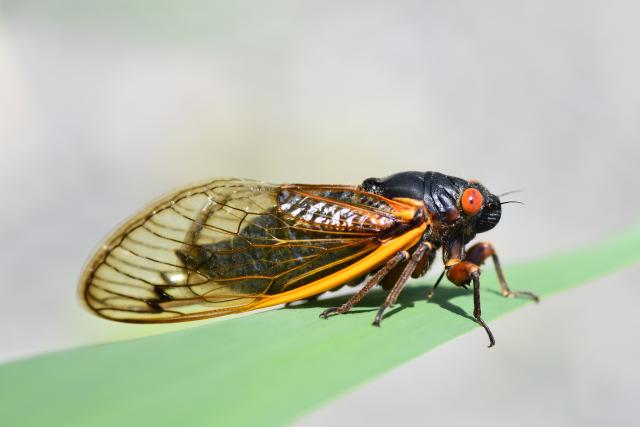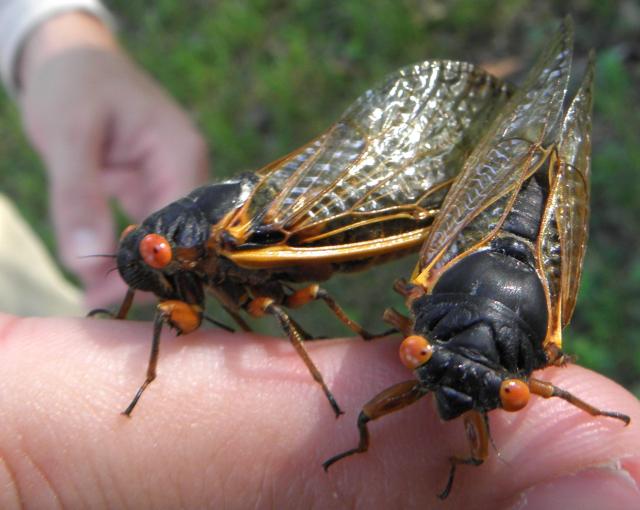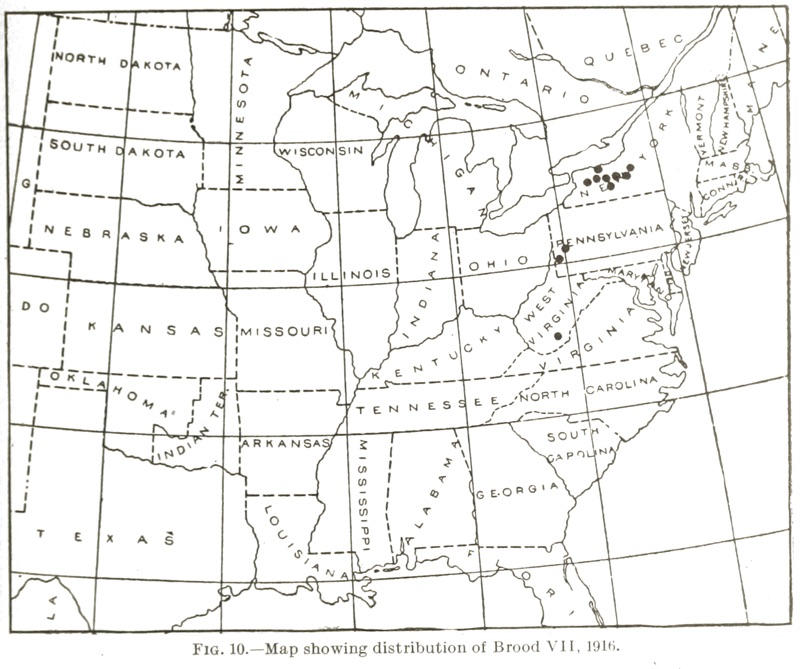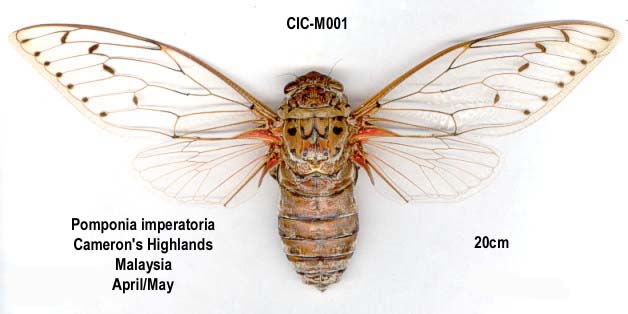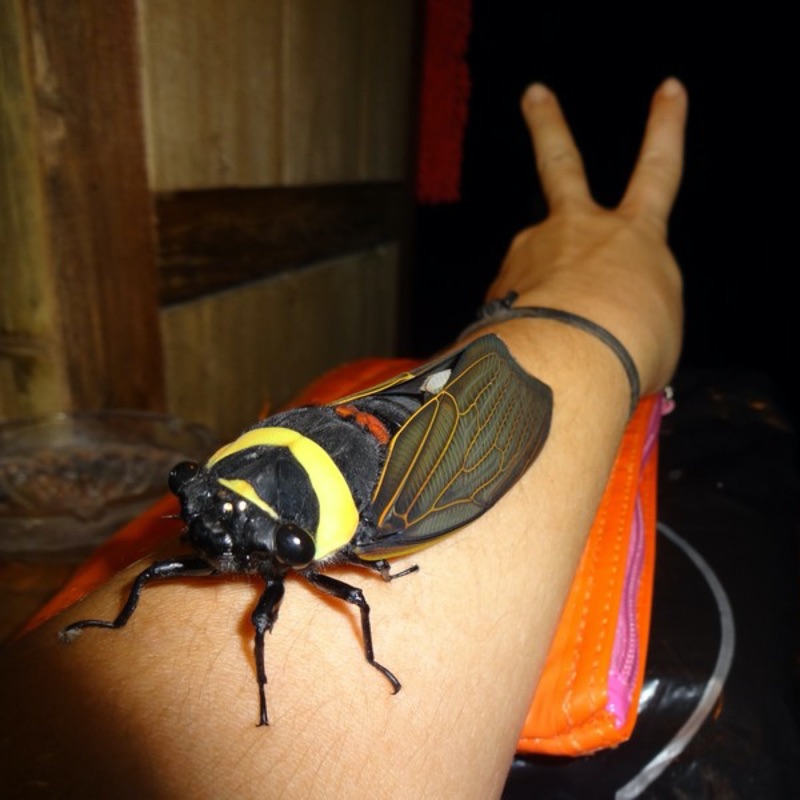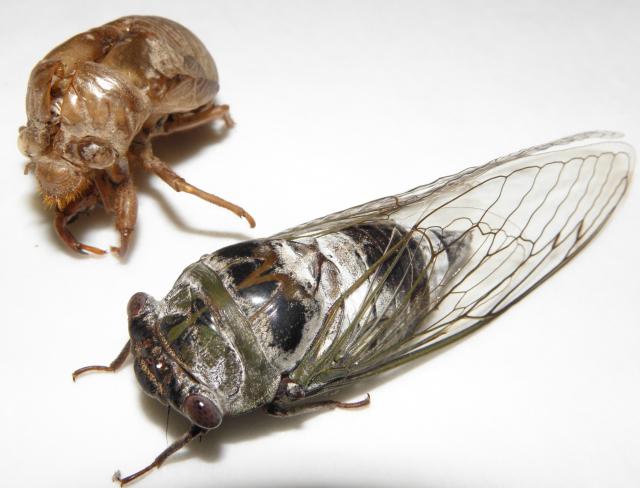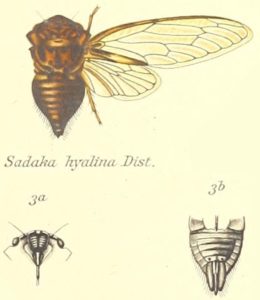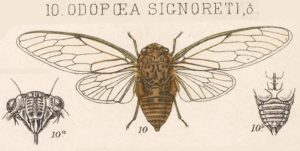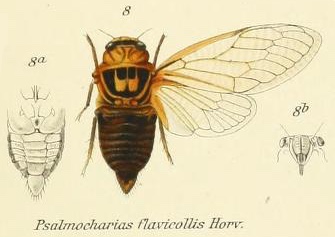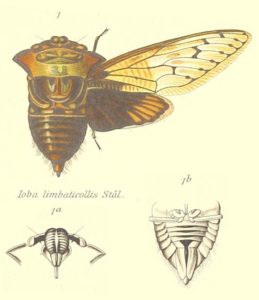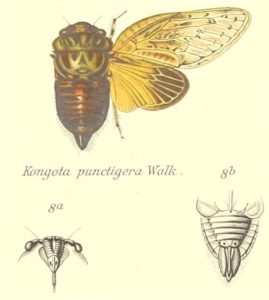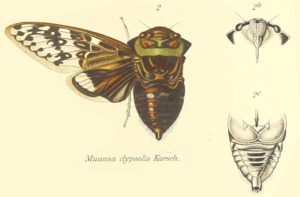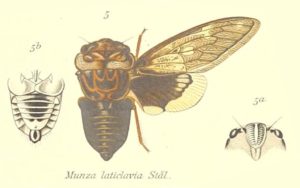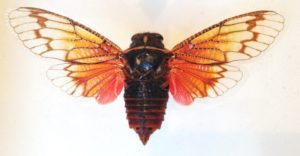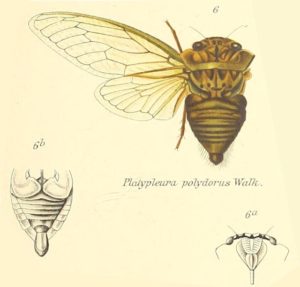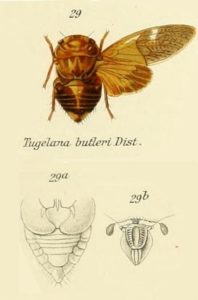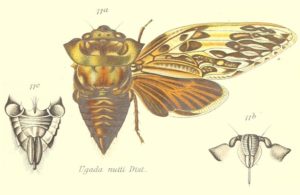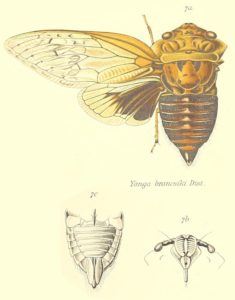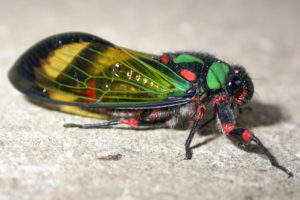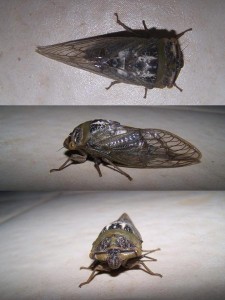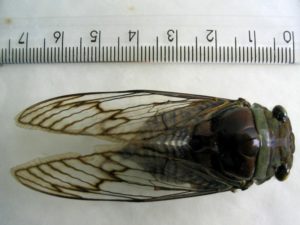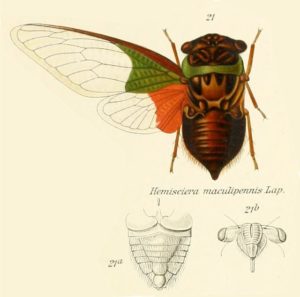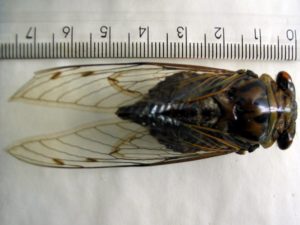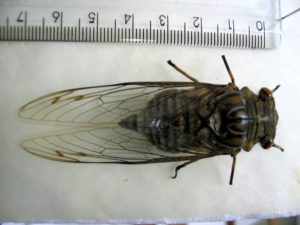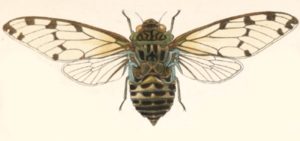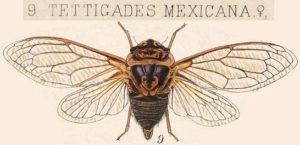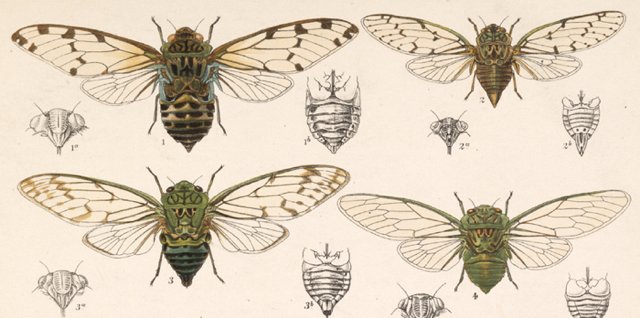Update (July 2018): A company called Meat Maniac sells cicadas in a can. Don’t know which species, but they have a “nutty flavor”.
Also, send me a box of these cicadas from China… um, I mean Chinese City Tells Citizens to Fight Bug Infestation By Eating Them.
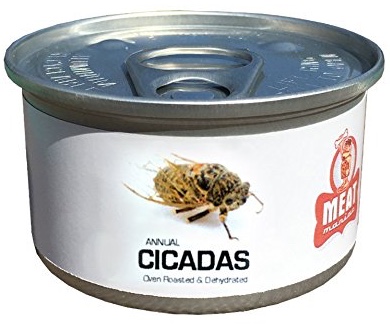
Also, read this amazing story about how Brood VII cicadas helped kept the Onondaga Nation alive during a time of famine.
The original article from 2006:
[WARNING:] Cicadas, 17-year cicadas at least, are well-known bioaccumulators of mercury. If consuming mercury is a concern, you should not eat cicadas.
Dogs, cats, squirrels, fish, and people can’t stop eating cicadas. Are they crazy, or “crazy like a fox”? (Foxes will eat them too.)
Pets and other domesticated animals

People want to know: “is it safe for my pets to eat cicadas”. The truth is in most cases your pets will be fine if they eat a few cicadas, however, you still need to be cautious and keep a close eye on your pets. Watch them for odd behavior, and don’t let them gorge themselves. Be cautious: the Humane Society has warned: “Cicadas Dangerous to Pets” [the original link is gone].
Pet-related concerns:
- Pets can choke on the rigid wings and other hard body parts of the cicadas.
- Pets will gorge themselves on cicadas, and possibly become ill and vomit.
- Pets who consume cicadas sprayed with copious amounts of pesticide can and will die.
- Pets might have an allergic reaction to the cicadas just as people do.
Bottom line: play it safe, and don’t let your pets eat cicadas if you can help it.
People:
Whether they’re curious, hungry, or doing it for the shock value, people are eating cicadas. Asian peoples have eaten cicadas for centuries, and there are records of Native Americans eating cicadas. People joke that they’re Atkins friendly [also no gluten]. I’ve heard they taste like asparagus, popcorn, minty shrimp, and piney shrimp — YUMMY PINE.
A man in Bloomington Indiana had an allergic reaction to cicadas after eating 30. He was also allergic to seafood — both cicadas and shrimps are arthropods so this makes sense.
[Note to self, “Do it, Dan, don’t be a wimp!”]
People related concerns:
- Cicadas are well known bioaccumulators of mercury.
- You could choke on their hard body parts.
- You could have an allergic reaction. If you’re allergic to seafood, don’t think about eating them.
- Do you really want to eat something that’s been marinating in lawn fertilizers,
pesticides and other chemicals for the past 17 years? - If you get the gout, it makes sense to avoid them.
People related links:
- National Geographic: National Geographic News :Low-Fat, High Protein Cicadas: New Health Snack
- Stephanie Bailey’s Internet insect cookbook has tips on how to prepare insects for human consumption! [note that the link now goes to an article by Stephanie about eating insects in general.]
Bottom line: You’re not a contestant on Fear Factor [a reality TV show in the 00s]. Why eat cicadas when you can choose from many of the fine menu choices at Applebees [a chain restaurant]?
Fish, turkeys, squirrels and everything else
If a creature has a mouth or some other mechanism to digest cicadas, it likely will try to eat them. Cicadas make great fish bait. Squirrels (yes, they’re nuts for cicadas too), birds, possums, raccoons, foxes, other insects, fungi… they all love cicadas.
Bottom line: let nature do the dirty work and clean your yard one bite at a time.
Tom, Cicada Gormandize:

